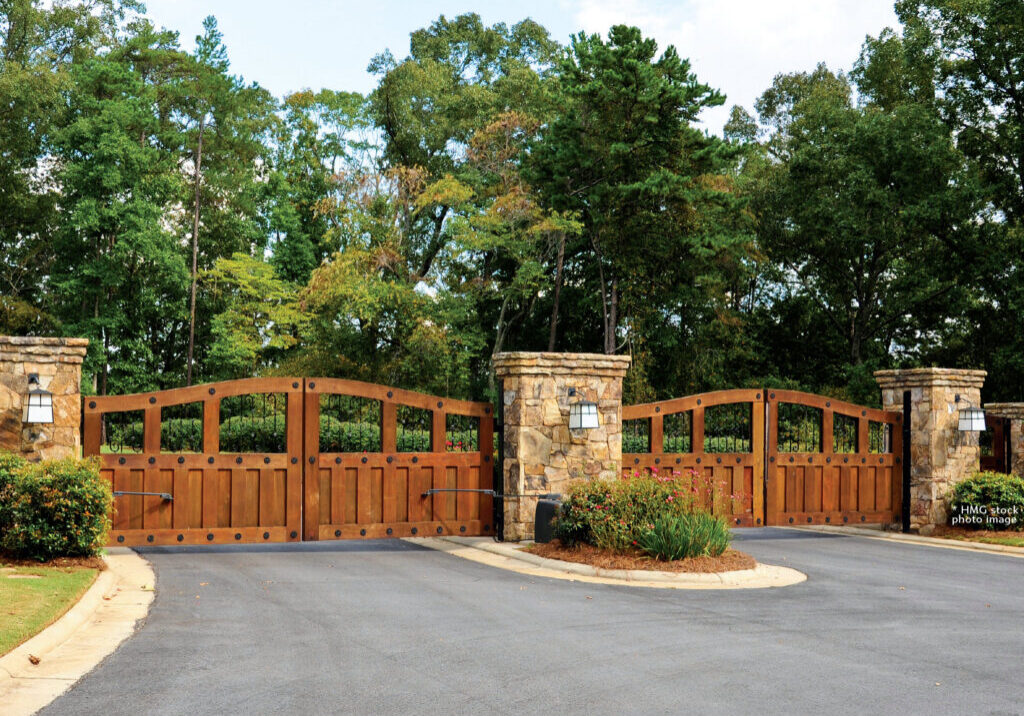Security Upgrade

Oak Brook Homeowner Associations Team up with Police Department
by Chuck Fieldman
Some Oak Brook homeowners’ associations are teaming up with the village’s police department to improve security in the area. It’s coming via a 50/50 license plate reader program, which will include installation of camera systems in participating subdivisions. It will be up to residents of each subdivision if they want to be involved, and as of June 1, 15 of the village’s homeowners’ association sent in preliminary interest forms, requesting formal price quotes to participate in the program, said Oak Brook Village Manager Greg Summers.
“Many of the village’s subdivisions already have in place their own gated security check point and/or camera systems that provide this level of security, so it was never expected that there would be a 100% level of participation,” Summers said. He said that while the Police Department initially requested $50,000 for Oak Brook’s license plate readers, the Village Board opted to set aside $200,000 for the 50/50 cost match program, with a willingness to increase the village’s contribution if homeowners’ association interest exceeded the allocated funding. “LPRs have a proven track record in locating stolen and suspicious vehicles as well as being used as an investigative tool when damages or crimes are later discovered,” Summers said. “Working with homeowners’ associations allows for the village’s investment to reach further, while also utilizing the LPRs on vehicles entering a subdivision’s defined area allows for the Police Department to begin responding to a suspicious vehicle before an suspect even begins to commit an offense.” Oak Brook Police Cmdr.
Ben Kadolph said the village has had two sites on main, arterial roads on which license plate readers have been active since the fourth quarter of 2019. He also believes additional systems in the village will aid police. “The best technology is assisting us in identifying felonious criminals,” Kadolph said. “The interest in expanding our system of LPRs came from an uptick in more aggressive crimes, and we’re trying to leverage the technology.” Summers said license plate readers are becoming commonplace in law enforcement, but believes the 50/50 program is at this point unique. “This is the first attempt that we are aware of to utilize the technology in partnership with individual homeowners’ associations to secure their own neighborhood,” he said. “I strongly encourage each and every homeowners’ association to take advantage of this unique program to make Oak Brook a model community for security.” Kadolph said the cost for each camera is estimated at $7,000 to $9,000.
The basic framework for the program is:
• Participation in the project is voluntary and will encompass all HOAs, regardless of controlled entrance or non-controlled entrance status, and regardless of the number of entrances to a subdivision.
• Each camera must be installed in collaboration with the village and utilize the same equipment, vendor and software as the village’s cameras.
• Each HOA must agree to grant access to its camera by the Oak Brook Police Department for monitoring.
• The project will be a 50/50 cost sharing initiative.
• As with all technology, this type of equipment normally requires replacement on a +/- 5-year cycle and each HOA will need to be committed to paying that 50% share of the replacement cost on such a cycle.
• Due to some commonality regarding ingress and egress roadways, there is a possibility that common roadways could be substituted for HOA entrance ways, where appropriate, thereby reducing costs associated with the installation.
• An HOA may “opt out” at any given time prior to installation, if the HOA membership elects to do so. An HOA may also opt out at each replacement cycle should it wish to discontinue its financial participation in the program.
Summers said that following the preliminary interest forms, site specific cost proposals will be prepared by the camera vendor. Upon receipt of these proposals, homeowners’ associations will have 30 days to evaluate the proposal and signal a commitment to fund 50% of the installation and operational costs. He said the timeline for making the new license plate readers operational will vary, depending on the number of homeowners’ associations deciding to proceed, as well as equipment availability. “The vendor that we are working with carries a lot of in-stock inventory, and should be able to respond quickly to most installations,” Summers said. “In any case, all LPR’s should be operational by fall to year-end.”
*Photos by Ejay Khan













